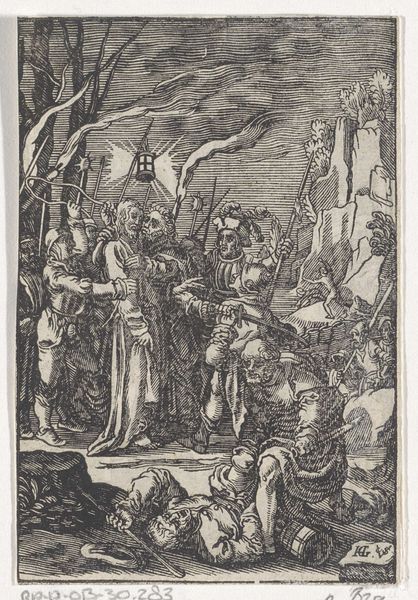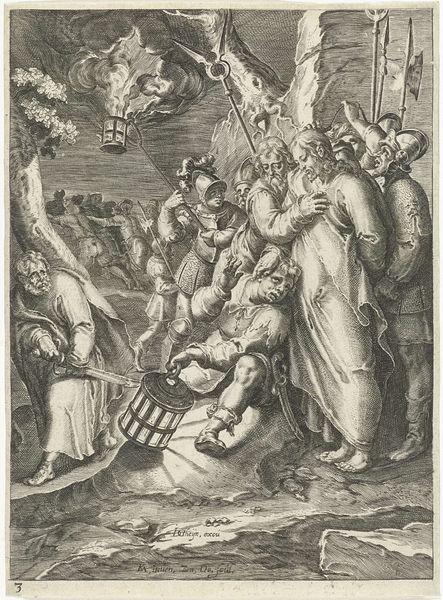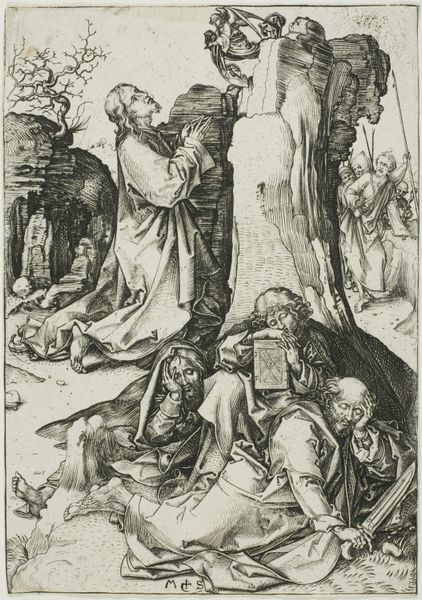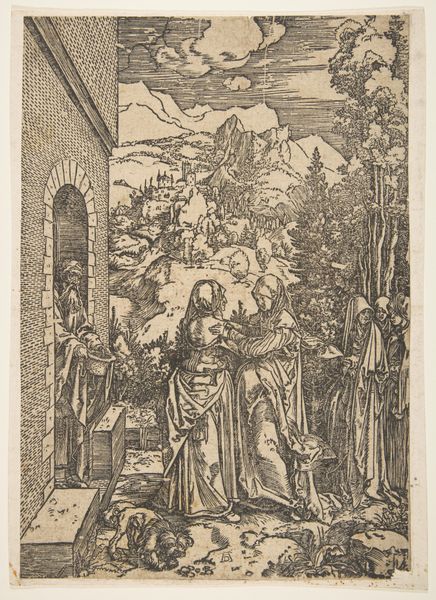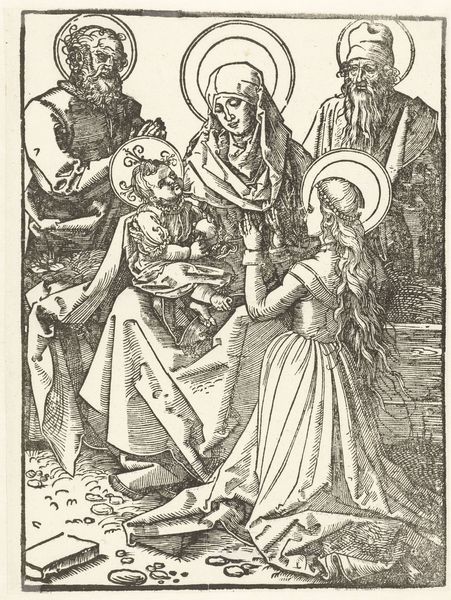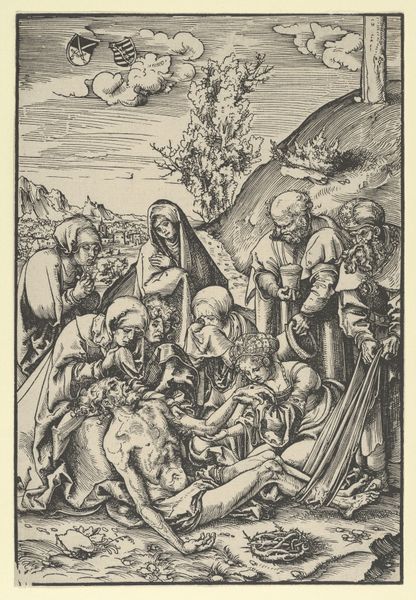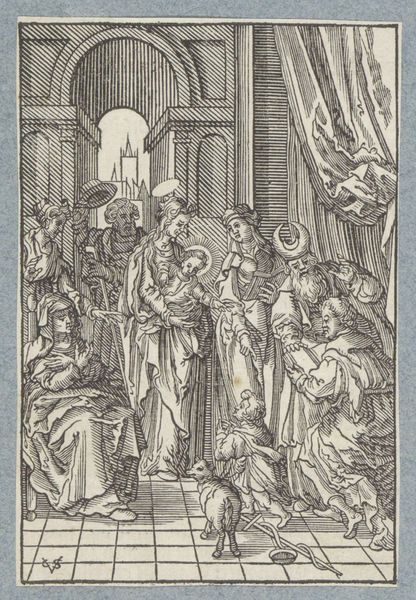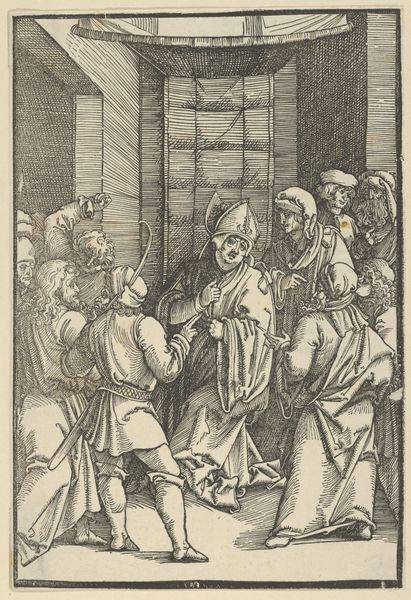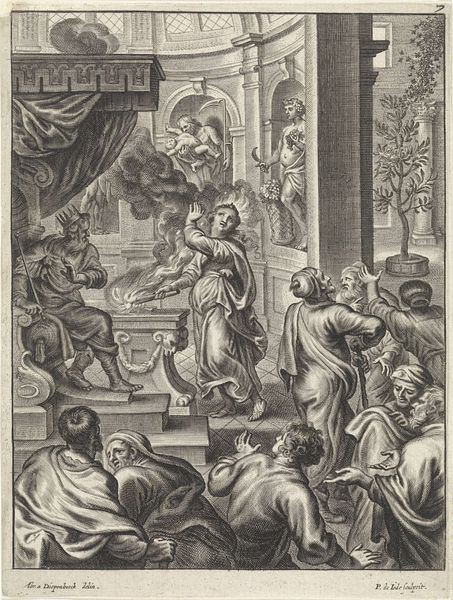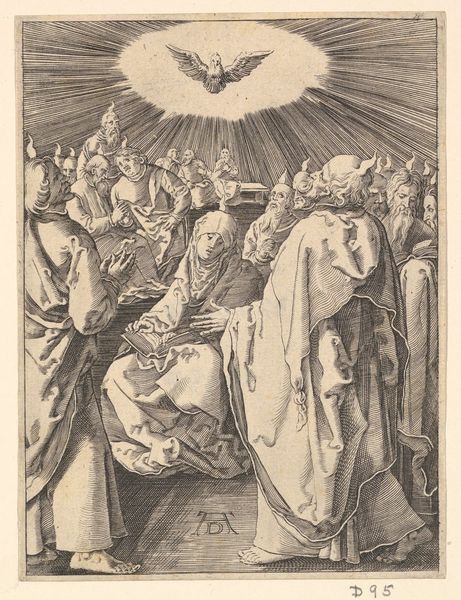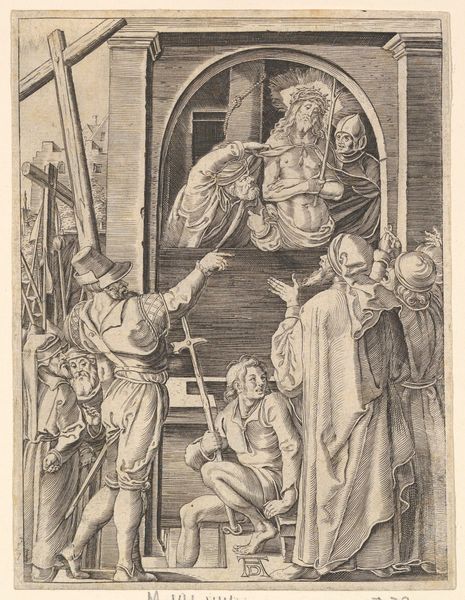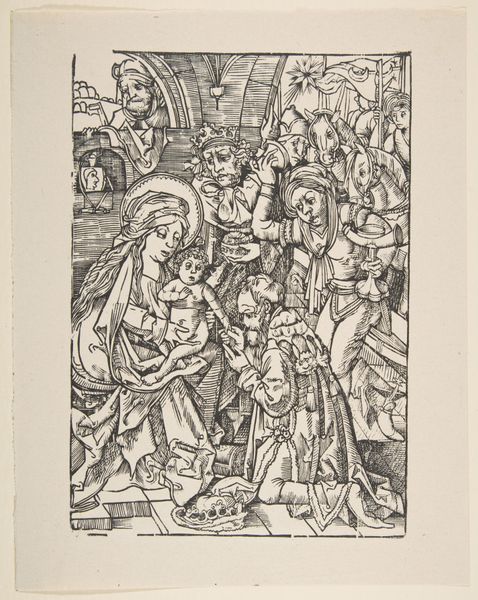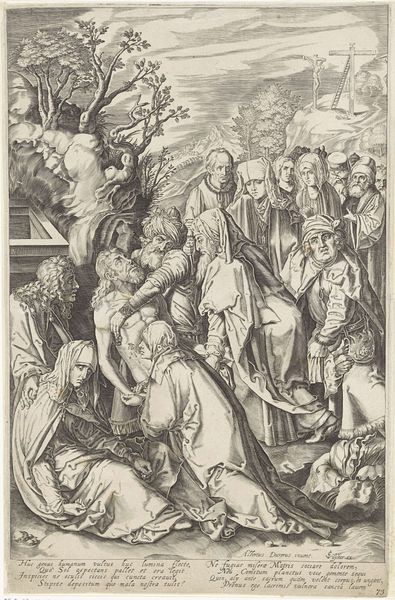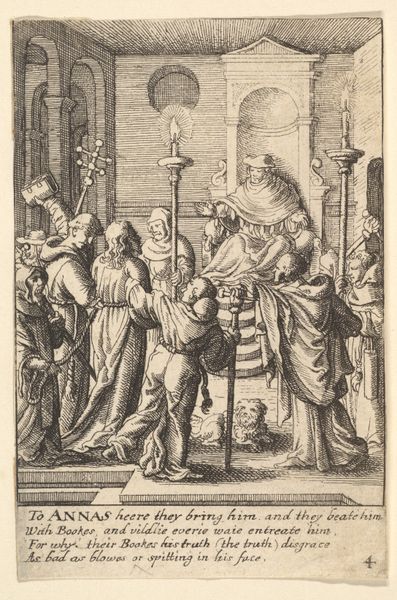
drawing, print, engraving
#
drawing
#
pen drawing
# print
#
pen illustration
#
figuration
#
11_renaissance
#
line
#
history-painting
#
northern-renaissance
#
engraving
Dimensions: width 197 mm, height 248 mm
Copyright: Rijks Museum: Open Domain
Editor: We're looking at "Holy Women at the Tomb," a print made by Dirck Volckertsz Coornhert in 1548, currently at the Rijksmuseum. It’s rendered in very fine lines, creating this almost otherworldly scene. What strikes me is how crisp and clean the image is, despite its age. How would you approach discussing this print? Curator: For me, this work sparks questions about the very process of its creation. Consider the labor involved in engraving – the sheer number of precise cuts needed to produce such detail. Each line, a deliberate act of skilled craftsmanship. Editor: Right, it’s so different from today’s digital production. Curator: Exactly! Think about the materials as well. Coornhert wasn't just creating an image; he was engaging with metal, with ink, with paper – all commodities with their own histories. How does the availability and cost of these materials impact artistic decisions? Editor: So, you're saying that the act of making it is as important as the image itself? Curator: Absolutely! And let's consider the social context. This image, multiplied through printmaking, becomes accessible to a wider audience than a unique painting ever could. What effect might that have on religious beliefs, or social structures in general? Consider how easily religious propaganda could spread using this method, even among those who cannot read. What statements can be drawn on social differences of that era through a class standpoint? Editor: I see. So, the print isn’t just about the biblical scene; it's also about the conditions that allowed it to be made and circulated. Curator: Precisely. The materiality of art offers us a tangible connection to the past and invites us to question the boundaries between art, craft, and commerce. Editor: That’s given me a totally new perspective. I was so focused on the religious aspect. Now, I'm seeing all the hidden layers within its production. Curator: Indeed, examining the means of production unveils how art embodies and perpetuates cultural values.
Comments
No comments
Be the first to comment and join the conversation on the ultimate creative platform.
